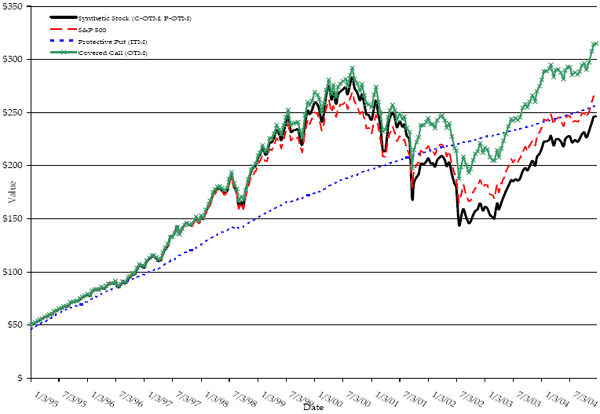In the January 2006 revision of their paper entitled “Is There Money to be Made Investing in Options? A Historical Perspective”, James Doran and Andy Fodor examine the return and risk of a variety of option strategies for a typical investor. Specifically, they assess whether any of 12 S&P 500 index options trading strategies as marginal investments within a larger index portfolio would have enhanced buy-and-hold returns over long periods. They chose the 12 strategies in accordance with the basic strategies outlined by the Chicago Board of Options Exchange. Where historical options price data is unavailable, they estimate plausible reconstructions and transaction costs. Using two long periods (1970-2004 and 1995-2004) and focusing on overall portfolio returns, they find that:
- Short-term naked option strategies are highly profitable, enhancing risk-adjusted returns. Selling put options exploits the “crashophobia” of other investors.
- Selling short-term at-the-money or out-of-the-money covered call options has outperformed on a risk-adjusted basis, even though such positions limit upside gain.
- Most long strategies, including buying protective (married) puts, do not enhance portfolio returns. Protective puts do substantially dampen portfolio risk if executed with short-term at-the-money or out-of-the-money positions.
- Among options combination strategies, only the long-term bear-spread over the 34-year period outperforms the S&P 500 index (because of the 1973 and 1987 crashes). Successful combination strategies generally require superior market timing.
- Long-term synthetic index positions (buying a call and selling a put) can outperform by over 5% annually with a higher Sharpe ratio, but still with high volatility.
The following chart, taken from the paper, shows the evolving portfolio values ($000), including all transaction costs, over the period January 1995 through December 2004 for: (1) buying and holding the S&P 500 index; (2) a synthetic index constructed from out-of-the-money calls and out-of-the-money puts; (3) in-the-money protective puts; and, (4) out-of-the-money covered calls. All options expire monthly. The initial value of each portfolio is $50,000. Note that the short-term synthetic index does not outperform.

In summary, investing in options as a marginal enhancement to a buy-and-hold approach can improve returns and Sharpe ratios, but only if the options positions are small compared to overall portfolio size.